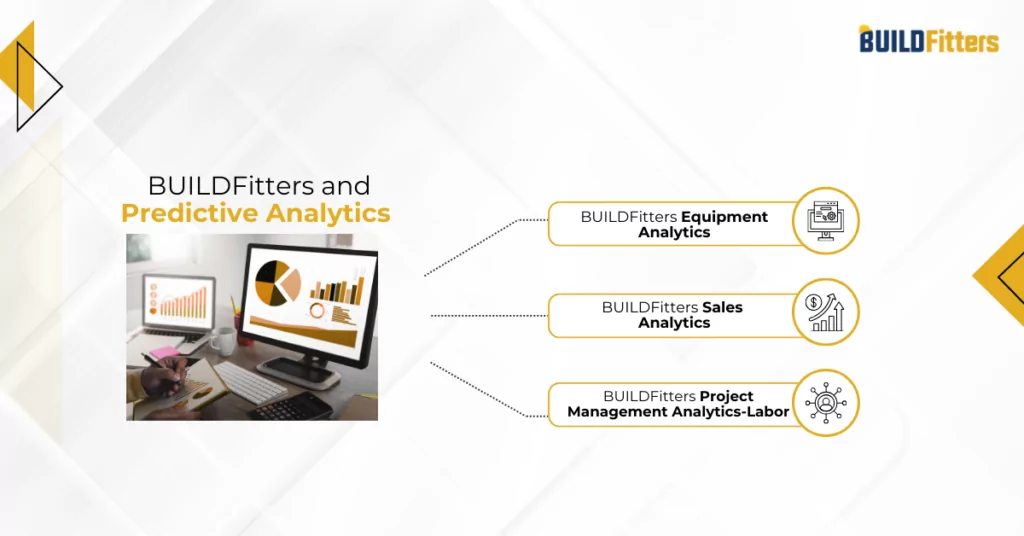
Stay Ahead of The Curve: Leveraging Predictive Analytics in Construction
Introduction
Predictive analytics in construction was once a far-fetched dream, as the industry traditionally resisted digitization and software innovation. However, the landscape has dramatically shifted in recent years. Today, Architecture, Engineering, and Construction (AEC) professionals across the globe are not only embracing predictive analytics tools and proactively utilizing them to enhance decision-making and operational efficiency. This technological leap forward represents a significant transformation in an industry known for its cautious approach to innovation. By integrating predictive analytics, leaders in the construction sector are now adeptly navigating complex projects, managing risks more effectively, and achieving cost efficiencies. These advancements mark a new era where data-driven insights are becoming indispensable for staying competitive and addressing the unique challenges of the construction industry. This article will discuss how companies use predictive analytics in construction processes and how these analytics have helped optimize operations overall.
Predictive Analytics in Construction
Falling under the umbrella of advanced analytics, predictive analytics is one of the most trending topics globally. The concept behind this type of analytics is centered around using historical data, statistical modeling, machine learning, and data mining techniques to predict future outcomes. Predictive analytics in construction involves tracking, reporting, and monitoring various performance indicators related to the project’s processes and operations. Predictive analytics tools for the construction industry can potentially revolutionize several critical areas in the modern age. These include:
- Worksite optimization
- Project tracking and visibility
- Data-driven insights
- Health and safety compliance
Using predictive analytics in construction processes, general contractors, project managers, and entrepreneurs can easily anticipate potential project delays, cost overruns, resource shortages, and productivity bottlenecks. For example, predictive analytics in construction plays a crucial role in identifying emerging problems before they become significant. By leveraging analytics, potential pitfalls can be anticipated and mitigated, saving valuable time and resources that would otherwise be spent on reporting, planning, and forecasting. These challenges directly impact a company’s finances, particularly in an industry where substantial portions of the budget are allocated to materials and labor. Hence, any opportunity to enhance efficiency, reduce costs, and minimize material waste is highly advantageous and warmly embraced.
Furthermore, the importance of risk management must be addressed, not only in the construction sector but also in the broader business world. By utilizing data-driven insights to inform decision-making, risk management processes become more robust and efficient. Ultimately, this leads to cost-savings and an increased emphasis on safety, benefiting the bottom line and overall operational success.
To learn about the various types of analytics, read our blog ‘Stepping into The Future of Analytics.’
Ready To Power Your Construction Business with Predictive Analytics?
Request a demo and witness firsthand how our solutions can transform your construction processes.
Common Predictive Analytics Tools for Construction
Predictive analytics tools have become increasingly important in the construction industry to improve project efficiency, reduce costs, and enhance decision-making. Here are some commonly used predictive analytics tools for construction:
Building Information Modeling (BIM):
BIM software lets construction professionals digitally represent a building’s physical and functional characteristics. It can simulate construction processes, identify potential clashes or conflicts, optimize designs, and predict project outcomes.
Predictive Cost Analytics:
These tools use historical data and statistical algorithms to forecast project costs accurately. They can identify cost drivers, estimate material quantities, predict labor requirements, and evaluate the impact of potential changes on project budgets.
Schedule Optimization Software:
These tools leverage historical project data and algorithms to optimize construction schedules. They can analyze critical path activities, identify schedule risks, and suggest alternative sequencing to minimize delays and maximize resource utilization.
Risk Management Tools:
Predictive analytics tools for risk management in construction assess project risks and provide insights for proactive mitigation. They use historical data, industry benchmarks, and advanced analytics techniques to forecast potential hazards and their impacts on project outcomes.
Equipment and Resource Optimization:
Predictive analytics tools can help construction companies optimize equipment and resource utilization. They analyze equipment maintenance, downtime, usage patterns, and resource availability data to predict future requirements, reduce downtime, and optimize resource allocation.
Predictive Maintenance Systems:
These tools use sensors, Internet of Things (IoT) devices, and machine learning algorithms to monitor and predict equipment failures. By analyzing real-time data and historical performance, they can identify potential maintenance issues and schedule preventive actions, reducing equipment downtime and improving productivity.
Energy Efficiency Analysis:
Predictive analytics tools can assess energy usage patterns, environmental conditions, and building performance data to optimize energy consumption in construction projects. They can identify areas for energy-saving improvements, predict energy consumption trends, and evaluate the impact of energy-efficient measures.
Quality Control and Defect Detection:
Predictive analytics tools can analyze historical data and real-time information to identify potential quality issues and predict defects in construction projects. They can flag areas of concern, provide insights for corrective actions, and help improve overall project quality.
BUILDFitters And Predictive Analytics
BUILDFitters is a top-tier construction management software designed to streamline the construction project management lifecycle. Starting from sales, its features and apps target all processes until the project is in its final stages. However, BUILDFitters stands out from its competitors because it is a software designed keeping the needs of construction professionals in mind – this means that it focuses on user interface and ease of use. Predictive analytics within this construction management software thus concentrate on ease of use, ensuring that construction professionals can effortlessly harness the power of data-driven insights. Unlike other complex and cumbersome predictive analytics solutions, BUILDFitters’ incorporation of predictive analytics maintains a user-friendly approach, making it accessible even to those without extensive data science expertise.
Considering the importance and growing popularity of predictive analytics tools for construction, all three BUILDFitters analytics apps are developed using Power BI. This allows these apps to empower users with robust dashboards that provide real-time insights into data. Furthermore, its integration with Dynamics 365 CE and other connected apps enhances decision-making processes, thus streamlining overall project management.
BUILDFitters Analytics Apps
For example, for equipment and resource optimization, the BUILDFitters Equipment Analytics app helps construction professionals utilize predictive and prescriptive maintenance to track equipment chains across different projects and sites of your company. With historical and current data, companies can easily manage costs while enhancing resource optimization.
Similarly, with the BUILDFitters Sales Analytics app, AEC professionals can utilize predictive analytics tools within the construction sphere. The app seamlessly integrates with CRM solutions such as Dynamics 365 and provides detailed insights into leads, opportunities, conversions, etc. With a complete view of the sales pipeline, forecasting, cost management and sales activity, executive management can easily track productivity.
The BUILDFitters Project Management Analytics-Labor app enables project managers to optimize workforce management and project timelines effortlessly. It acts as a schedule optimization software consolidating timesheet entries and providing real-time analytics. Managers gain complete visibility into employee trades, cost codes, and project phases. Moreover, the app ensures adherence to labor regulations and trade-specific rules, minimizing compliance risks. With predictive analytics at its core, the app allows businesses to make data-driven decisions, anticipate potential challenges, and take proactive measures to ensure successful project outcomes.
Ready To See Predictive Analytics in Action?
Request a live demo and witness firsthand how our solutions can transform your construction processes.
Conclusion
The journey of predictive analytics in the construction industry, from a novel concept to an integral part of strategic decision-making, marks a significant milestone. Today, as AEC professionals worldwide embrace these tools, we see a paradigm shift toward a more proactive, data-driven approach to managing construction projects. The benefits of predictive analytics, ranging from enhanced operational efficiency to robust risk management, demonstrate a competitive advantage in a rapidly digitizing industry. As we look to the future, the role of predictive analytics is set to become even more pivotal. It promises not just to streamline project management but also to foster innovation and sustainability in construction practices. Companies that leverage these tools effectively will find themselves at the forefront of the industry, setting new standards in efficiency, safety, and quality.
BUILDFitters, focusing on user-friendly and effective predictive analytics solutions, exemplifies the potential of these technologies. By providing tools accessible to all levels of data expertise, BUILDFitters is playing a crucial role in democratizing advanced analytics in construction. As the industry evolves, embracing these technologies will not be a matter of choice but a critical factor for success. In conclusion, adopting predictive analytics in construction is no longer a looming trend but a present reality, offering enhanced efficiency, improved project outcomes, and a solid foundation for future growth. The industry is on the brink of a new era, ready to build smarter, safer, and more efficiently than ever.




